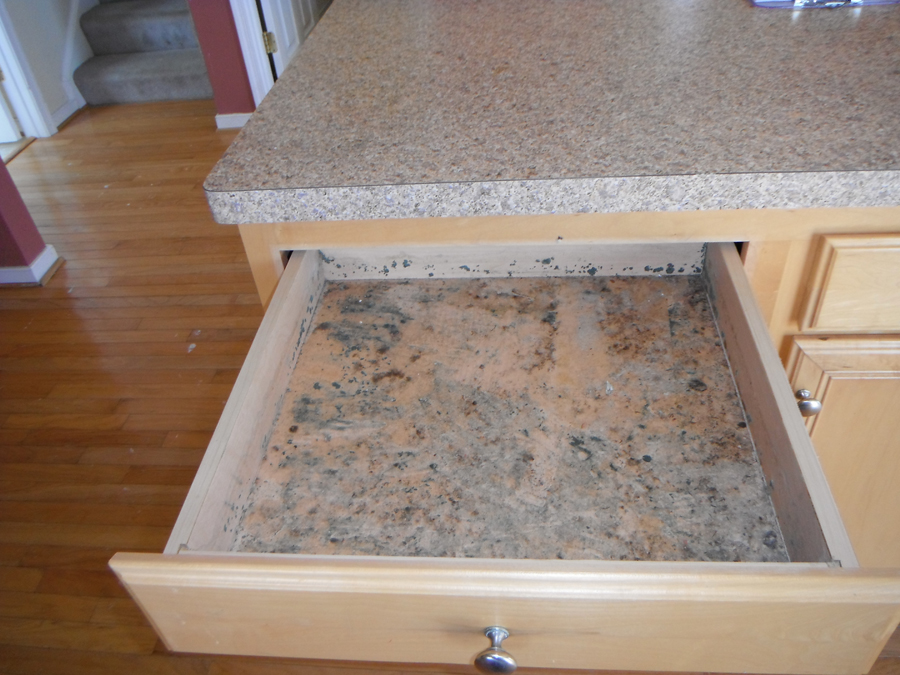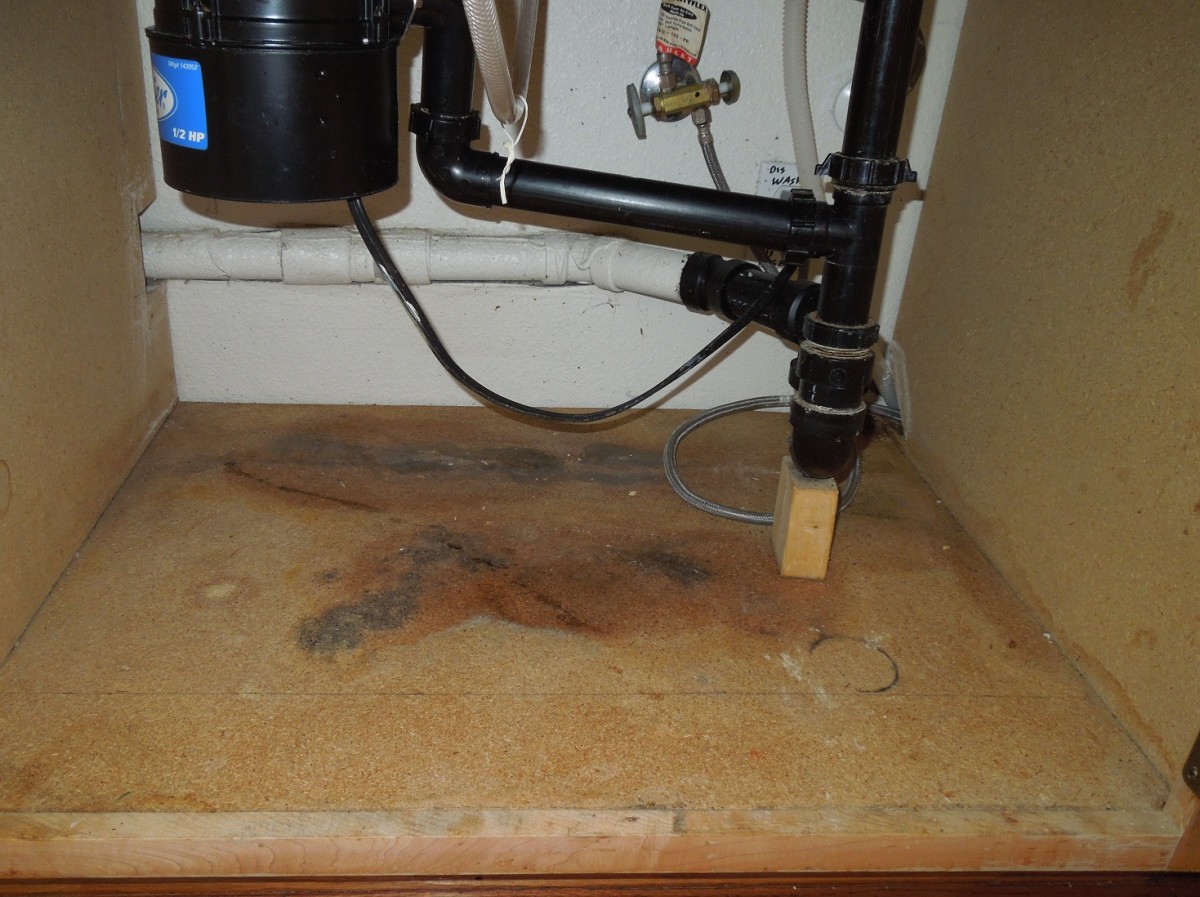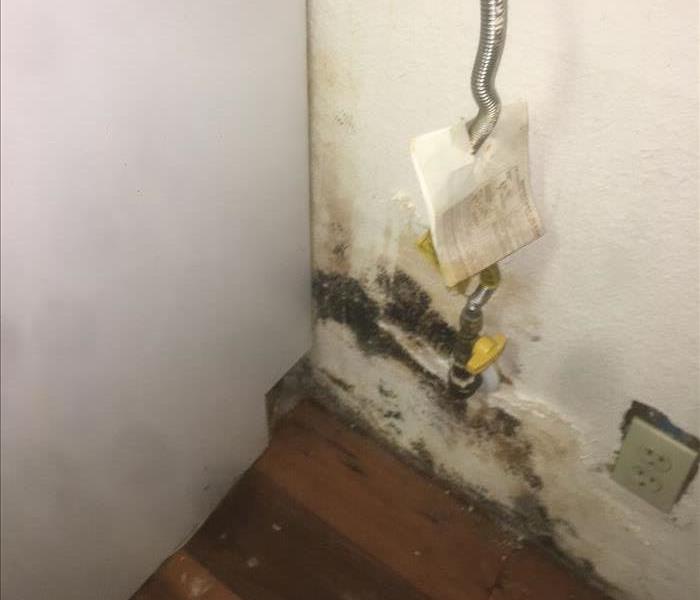Identifying Mold Under Kitchen Cabinets

Mold growth under kitchen cabinets can be a serious problem, affecting both the health of your home and the well-being of its occupants. Identifying the presence of mold early on is crucial for preventing further damage and addressing potential health risks.
Signs of Mold Growth
Mold can manifest in various ways, making it important to be aware of the common signs of its presence. Here are some key indicators to look out for:
- Visible Mold Growth: This is the most obvious sign. You may see black, white, green, or gray patches or spots on the underside of cabinets, walls, or floors.
- Musty Odor: Mold often emits a distinctive musty or earthy smell, which can be a telltale sign of its presence, even if you don’t see visible growth.
- Discoloration: Areas affected by mold may show discoloration, such as yellowing or staining, on surfaces like wood, paint, or drywall.
- Peeling Paint: Mold can cause paint to peel or bubble, indicating damage to the underlying surface.
- Respiratory Problems: If you experience symptoms like coughing, sneezing, wheezing, or difficulty breathing, particularly when near the affected area, mold exposure could be a contributing factor.
Types of Mold Found in Kitchens
Kitchens are particularly susceptible to mold growth due to their high humidity levels and potential for food spills. Some common types of mold found in kitchens include:
- Cladosporium: This type of mold is often found in damp areas and is characterized by its dark green or black color.
- Aspergillus: Aspergillus is a common mold that can grow on a variety of surfaces, including food. It can produce allergens and toxins that can be harmful to human health.
- Penicillium: This mold is often found in damp environments and is known for its blue-green or green color. It can produce mycotoxins that can cause respiratory problems and other health issues.
Health Risks Associated with Mold Exposure
Mold exposure can pose various health risks, particularly for individuals with pre-existing respiratory conditions or allergies. Some common health problems associated with mold include:
- Allergies: Mold spores can trigger allergic reactions, leading to symptoms such as sneezing, coughing, itchy eyes, and runny nose.
- Respiratory Problems: Mold exposure can worsen existing respiratory conditions like asthma and bronchitis, and even lead to new respiratory problems in some individuals.
- Mycotoxins: Certain types of mold produce mycotoxins, which can cause a range of health problems, including gastrointestinal issues, liver damage, and neurological problems.
Identifying the Source of Moisture
To effectively address mold growth, it’s essential to identify the source of moisture that is fueling its development. Common sources of moisture in kitchens include:
- Leaky Pipes: Leaking pipes under sinks or in walls can provide a constant source of moisture for mold growth.
- Condensation: High humidity levels, particularly in areas with poor ventilation, can lead to condensation on surfaces, creating a favorable environment for mold.
- Spills and Leaks: Spills from appliances, sinks, or other sources can create damp spots that can attract mold.
- Improper Ventilation: Poor ventilation can trap moisture, leading to increased humidity and promoting mold growth.
Preventing Mold Growth Under Kitchen Cabinets: Mold Under Kitchen Cabinets

Mold growth under kitchen cabinets is a common problem that can be prevented with proper care and attention. Mold thrives in warm, humid environments, making the area under kitchen cabinets a prime breeding ground. This section explores effective methods for preventing mold growth under kitchen cabinets, emphasizing the importance of ventilation and moisture control.
Ventilation
Proper ventilation is crucial in preventing mold growth under kitchen cabinets. Adequate airflow helps to dry out the area and discourage mold growth.
- Ensure proper exhaust fan operation: A well-functioning exhaust fan above the stove removes moisture and cooking vapors, reducing the humidity under cabinets. Regular cleaning and maintenance are essential to ensure optimal performance.
- Open windows and doors: Ventilating the kitchen by opening windows or doors after cooking helps to remove moisture and improve airflow.
- Consider installing a dehumidifier: In humid climates, a dehumidifier can be helpful in removing excess moisture from the air, especially during periods of high humidity.
Moisture Control
Controlling moisture is paramount in preventing mold growth under kitchen cabinets.
- Wipe up spills promptly: Promptly clean up spills on countertops and floors to prevent water from seeping under cabinets and creating a breeding ground for mold.
- Avoid storing wet items under cabinets: Storing damp towels, dishcloths, or other wet items under cabinets can create a humid environment that encourages mold growth.
- Use drip trays under appliances: Place drip trays under appliances such as refrigerators and dishwashers to catch condensation and prevent water from pooling under cabinets.
- Inspect plumbing for leaks: Regularly inspect plumbing under cabinets for leaks, as even small leaks can create moisture buildup.
Cleaning Routine
A regular cleaning routine can help prevent mold growth under kitchen cabinets.
- Wipe down countertops and floors: Regularly wipe down countertops and floors with a mild cleaning solution to remove food particles and spills.
- Clean under cabinets: At least once a month, clean under cabinets with a mild cleaning solution and a damp cloth.
- Check for signs of mold: During cleaning, check for signs of mold growth, such as discoloration, musty odors, or fuzzy patches.
Cleaning Products
Several cleaning products are safe and effective for removing mold under kitchen cabinets.
- Bleach solution: A bleach solution (1 part bleach to 10 parts water) is an effective disinfectant for killing mold spores.
- Borax solution: A borax solution (1/2 cup borax to 1 gallon of water) is a natural and effective mold remover.
- Tea tree oil: Tea tree oil is a natural antifungal agent that can be used to clean and prevent mold growth.
Removing Mold Under Kitchen Cabinets

Mold growth under kitchen cabinets can be a serious issue, affecting both the aesthetics and the health of your home. Fortunately, removing mold is achievable with the right approach and materials. This section provides a step-by-step guide for removing mold from under kitchen cabinets, ensuring a safe and effective process.
Cleaning Supplies and Tools
The right tools and cleaning solutions are crucial for effectively removing mold. Here are the essential items:
- Personal Protective Equipment (PPE): Always wear gloves, a mask, and eye protection to prevent direct contact with mold spores and to avoid inhaling them.
- Cleaning Solution: A bleach solution is generally effective for killing mold. Mix one cup of bleach with one gallon of water. Other options include commercially available mold and mildew cleaners.
- Spray Bottle: Apply the cleaning solution to the affected areas using a spray bottle.
- Scrubbing Brush: Use a stiff-bristled brush to scrub the mold-infested areas thoroughly.
- Ventilation: Open windows and doors to ensure adequate ventilation while cleaning.
- Dry Cloth: Wipe away the cleaning solution and any remaining mold with a dry cloth.
- Dehumidifier: A dehumidifier can help reduce moisture levels, preventing mold growth in the future.
- Vacuum Cleaner: Use a vacuum cleaner with a HEPA filter to remove any remaining mold spores and debris.
- Trash Bags: Use sealed trash bags to dispose of mold-infested materials.
Removing Mold from Under Kitchen Cabinets, Mold under kitchen cabinets
The following steps Artikel a safe and effective method for removing mold from under kitchen cabinets:
- Identify the Source of Moisture: Before cleaning, determine the source of moisture that led to the mold growth. This could include leaks, condensation, or poor ventilation. Addressing the source is crucial for preventing future mold growth.
- Prepare the Area: Clear the area under the cabinets, removing any items or appliances that may obstruct cleaning. Cover the floor with a drop cloth to protect it from the cleaning solution.
- Apply the Cleaning Solution: Spray the cleaning solution onto the mold-infested areas, ensuring thorough coverage. Allow the solution to sit for 10-15 minutes to kill the mold.
- Scrub the Affected Areas: Use a stiff-bristled brush to scrub the mold-infested areas thoroughly, removing any visible mold. Pay particular attention to cracks and crevices where mold can hide.
- Rinse and Dry: Rinse the cleaned areas with clean water to remove the cleaning solution and any remaining mold spores. Dry the area thoroughly with a clean cloth or allow it to air dry completely.
- Remove Mold-Infested Materials: If the mold has penetrated the wood or other materials under the cabinets, remove and discard the affected materials. This is essential to prevent the spread of mold and to ensure a clean and healthy environment.
- Dispose of Mold-Infested Materials: Place mold-infested materials in sealed trash bags and dispose of them in an outdoor trash container. Do not compost these materials, as they can spread mold spores.
- Ventilate the Area: Open windows and doors to ventilate the area, allowing fresh air to circulate and dry the area completely. This helps to prevent the recurrence of mold growth.
Preventing Mold Growth
After removing mold, it is essential to implement preventive measures to prevent its recurrence. Here are some key tips:
- Address Moisture Sources: Fix any leaks or plumbing issues promptly. Ensure proper ventilation by using exhaust fans during cooking and showering.
- Reduce Humidity: Use a dehumidifier to lower humidity levels, especially in areas prone to condensation. Regularly check and clean the dehumidifier to ensure optimal performance.
- Maintain Good Ventilation: Ensure adequate airflow under kitchen cabinets by leaving a small gap between the cabinets and the countertop. This allows air to circulate and prevent moisture buildup.
- Clean Regularly: Regularly clean under kitchen cabinets, removing any spills or debris promptly. This helps to prevent the accumulation of moisture and organic matter that can feed mold growth.
Important Note: If the mold infestation is extensive or if you are unsure about the best course of action, it is advisable to consult a professional mold remediation specialist. They have the expertise and equipment to safely and effectively remove mold from your home.
Mold under kitchen cabinets can be a real headache, but you can tackle it head-on! If you’re planning to give your kitchen a makeover, consider replacing those old cabinets with something stylish and durable, like raised panel kitchen cabinets.
They not only look great, but their solid construction can help prevent moisture buildup that leads to mold in the first place. So, with a fresh look and a clean start, you can say goodbye to those pesky mold spores for good!
Dek, ado lah tu, basih-basih lah jo ado kapuak di bawah kabinet. Biar ado ruang untuak angin berganti, kito bisa pakai cabinet sliding trash can holder untuak tempat sampah. Itu bisa bantu jaga kabinet tetep bersih dan kering, jadi kapuak pun tak ado lagi.
